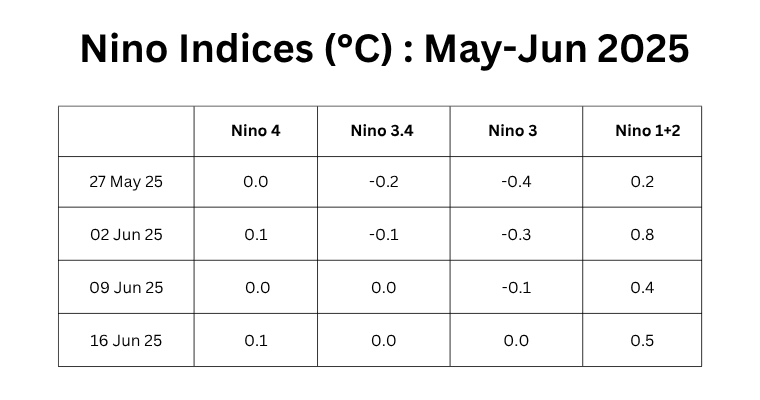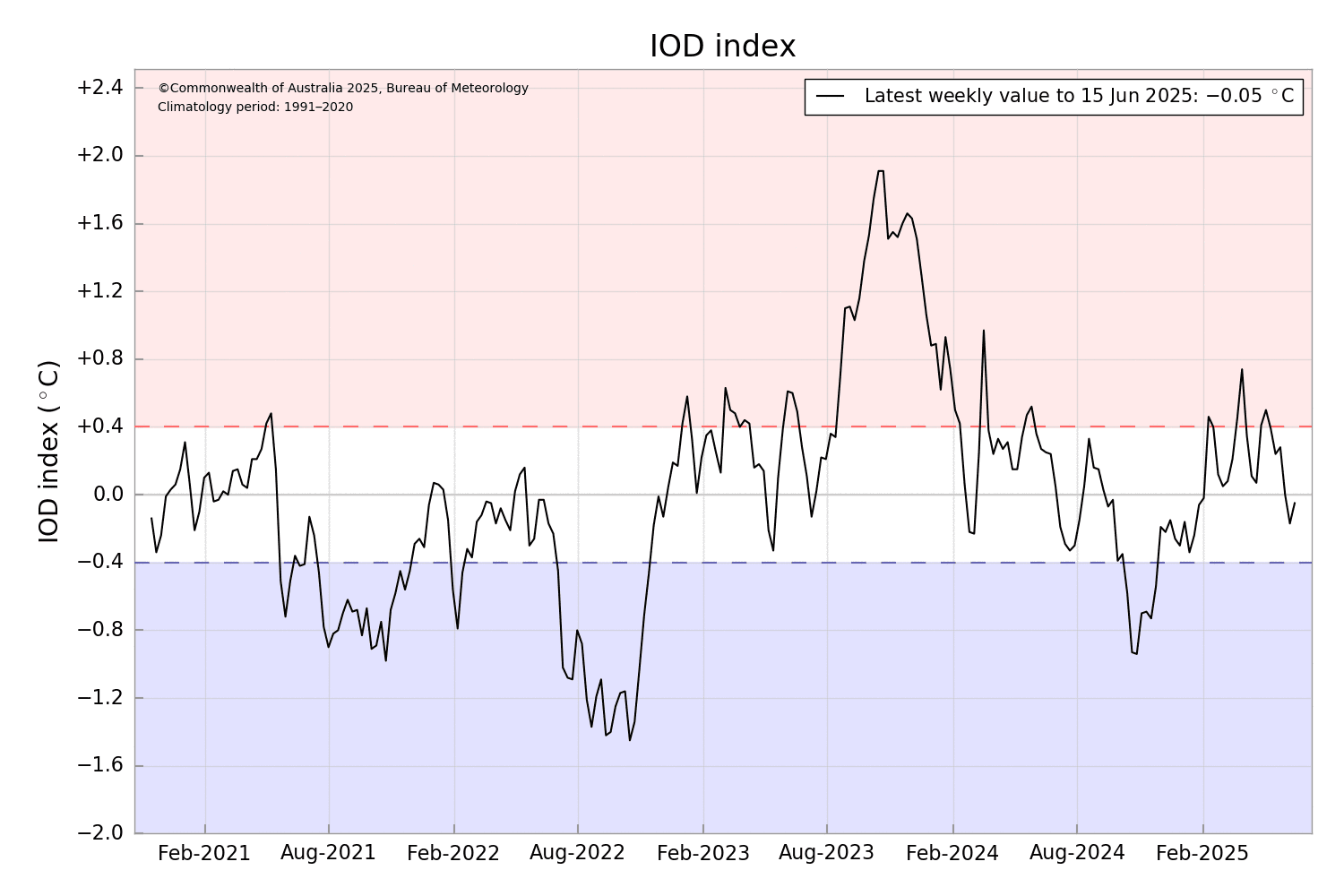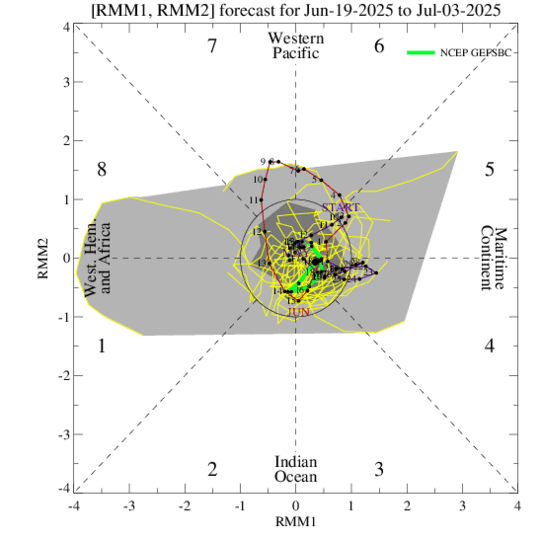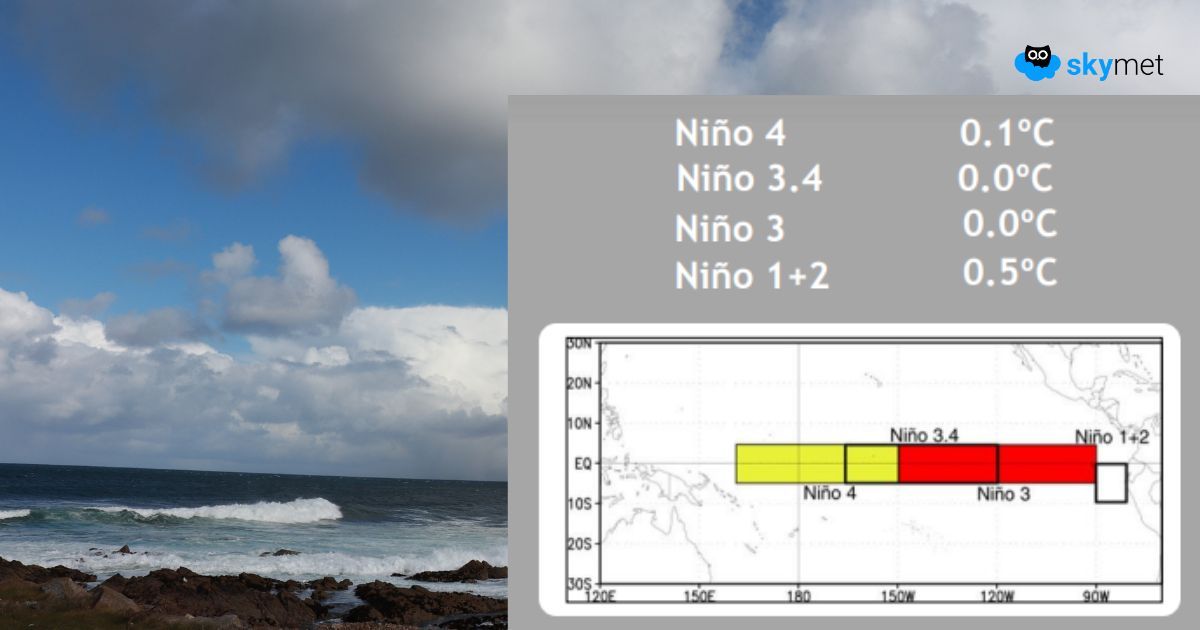ENSO generates a large-scale circulation pattern which impacts weather activity over a large portion of the globe. ENSO’s most important influence is on the Indian monsoon. El Niño generally suppresses monsoon rainfall, while La Niña more often shields it from any adverse impact. However, the ENSO-neutral relationship with the Indian monsoon remains quite complicated.
Incidentally, the teleconnection between ENSO-neutral and monsoon is taken lightly and therefore remains least studied. Under ENSO-neutral conditions, the southwest monsoon got spoiled in 1952 (-8%), 2001 (-8%), and 2004 (-12%), while rains were bountiful in 1953 (+14%), 1961 (+22%), 1990 (+6%), and 2013 (+6%). ENSO-neutral by itself does not have a simple and straightforward temperature configuration over the equatorial Pacific. Essentially, even in the neutral state, the pockets of ‘warm’ and ‘cool’, if any, in the Nino region become decisive for the fate of the monsoon.
ENSO: During the last four weeks, SSTs were near average across most of the central equatorial Pacific and above average in the far eastern Pacific. Most models favour ENSO-neutral to prevail through the Northern Hemisphere fall and winter 2025–26. However, the CFS.v2 ensemble mean indicates La Niña is favoured to emerge in the Northern Hemisphere fall and winter 2025–26. La Niña share is increasing at the cost of ‘Neutral’, and the El Niño component remains minimal throughout the year.

There is little change in the indices over the entire Nino region. Except over Nino 1+2, the other three indices have been zero-zero for the second consecutive week. Apparently, ENSO-neutral with zero-zero anomaly is likely to persist during the quarter Jun–Aug 2025. Chances of Neutral and La Niña get shared equitably in the quarter Nov–Jan. There is a fair amount of chance that the northeast monsoon season may perform under the shadow of La Niña.

IOD: The Indian Ocean Dipole is neutral. The latest value of the index for the week ending 15th June was -0.05°C. The IOD index has steadily decreased over the last four weeks but remains within the neutral range of -0.4°C to +0.4°C. The neutral state of the IOD is likely until July and may become negative thereafter. Either way, it may not offer any constructive support to the southwest monsoon.

MJO: During the past week, the MJO index rapidly weakened back into the unit circle. It is likely to meander over the Indian Ocean in Phase 2 & 3 with minimal amplitude. This may offer auxiliary support to the monsoon system emerging over the Bay of Bengal in the remaining days of the month. Models indicate strengthening of MJO during the first week of July.
None of the oceanic parameters are promising implicit support to the monsoon. Still, the current has gathered sufficient pace and momentum. With its intrinsic energy, the monsoon is expected to cover the country before the stipulated timelines.













